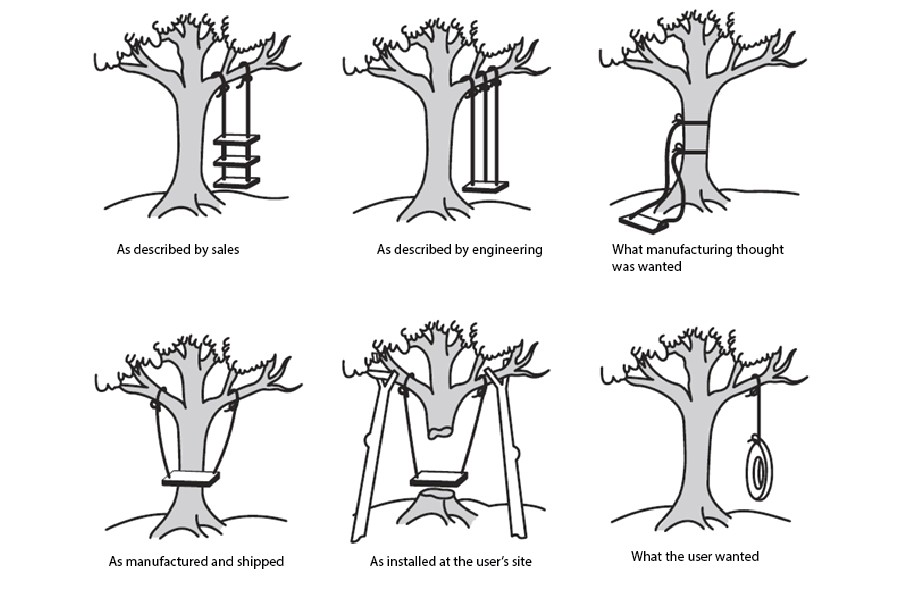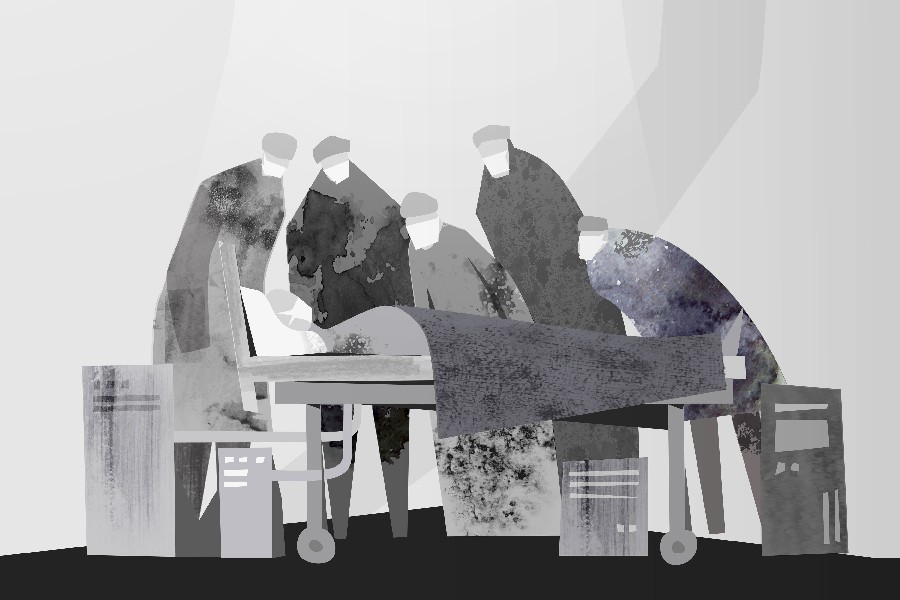All product and device developers aim to conceive new innovative solutions to meet and exceed consumer needs and solve challenging problems. However, solutions are often implemented into forms intended to delight and satisfy the user, only to miss the mark and fail. Many factors can sink a new product launch. Interpreting and anticipating user needs is foundational to an early successful direction in any product development initiative. The ability to recognize needs through empirical research and synthesize them into new and high-value product experiences that deliver unique functional benefits and propel new emotional connections.

Force-4 Innovation Group and Stress Engineering Services are uniquely proficient in synthesizing a holistic process to deliver new human-centered product ideas to market. The ability to harness and validate user needs and synthesize them into product experiences that meet new market demand with differentiated high-value products and experiences. Our teams of strategists, researchers, designers, and engineers build on user, customer, and market insights to create viable breakthrough innovations.
As competitiveness pressures on evolving user needs and regulatory requirements create ever-compounding complexity for manufacturers, the art and science of exploring user needs early in the development process has never been more critical. “User needs” does not simply mean identifying attributes a user must have. It is how these attributes come together into a product experience that is all important.
An experience that synthesizes user needs in a product or device can be the difference between delight and disappointment. Deep exploration of user needs is foundational for developing product and device requirements, which leads to success.
Force-4, the product development consultancy of Stress Engineering Services, has robust methods for generating early user requirements in discovery and evolving them through the product development process.
<span”>User Needs: The first step in understanding the problem
User needs to focus on outcomes where the main concern is to describe what is needed rather than how it should be delivered. Although this sounds nuanced, new product developers often need help to navigate the difference. To develop products or product “systems” that deliver on user needs, designers/researchers must understand those needs in the context in which they exist and represent them to the technical development team in the form of product requirements. The risk of developing an unsuccessful product is dramatically reduced when translated well. That said, it takes significant skill and experience to translate user contexts and user needs so that product and device designers with technical backgrounds can directly use them effectively. Recognizing this critical step in the new product development process, Force-4 focuses on the early phases of product development. These essential needs of the user are identified and translated into requirements that impact all subsequent development work.

Expanding on the Needs of Users, Foundational Methods
User needs are the first and usually most informal data to be used in defining product/device requirements and often refer to the difference between users’ goals associated with a particular product and the “present condition.” The present condition expresses the problems or dissatisfaction the user experiences with a current design and the possibilities they can envision, all of which are understood within the context of use. In the customer’s words, a user need is a statement that describes the benefit a customer derives or could derive from the product. Ideally, the need should be stated independently of the product proposed to meet the need.
Once the primary users of a product or device have been identified and characterized within the context of use, the next step is to identify each user’s main goals or objectives related to using the product. This process may sound simple, but it is not! It is more the rule than the exception that when asked, users of a product will entangle their needs with what they believe to be the solution to the problem. Ultimately, the best solution hinges on clearly understanding the user needs (what problem needs to be solved) from the perspective of each user profile instead of a perceived solution.
Methods of Understanding: the user needs and context of use
Identifying unmet or poorly met customer needs is the starting point for developing a successful new device. Qualitative methods, typically exploratory and open-ended, are particularly suited to this task.
Ethnography
Force-4 leverages ethnography to understand user needs when an existing product solution exists because of its emphasis on discovery. This approach is used to identify unmet or poorly met needs in clinical contexts because design-limiting deficiencies and faults are easily observed. Further, studying devices in their use context provides valuable quantitative information on device operation within the broader healthcare system ecosystem in which they are deployed, providing additional insights into more productive solutions.
Contextual Inquiry

Contextual inquiry (CI), also known as shortened ethnography, was developed by Holtzblatt and Beyer (1993) specifically to counter-address the difficulties of applying traditional ethnography, which, when implemented to its fullest, can place a high demand on time our resources to implement. CI was also designed to address difficulties in translating the outputs from ethnography studies into well-defined user requirements. CI is focused, targeted observations and interviews that predetermined research questions can influence.
Contextual inquiry involves the observer/interviewer “shadowing” workers. The observer may ask questions about what is happening, why it is happening, and how tasks could be improved. The observer and the user work together to discover essential aspects of any particular task or effort, which is often taken for granted. In most cases, the information gleaned from these activities includes insights the user may not recognize as relevant or significant. Through these observations, the researcher may identify deficient areas, such as performing a task inefficiently or as safely as possible. In addition, by asking the user questions (while they perform their work), the reasons for executing the task in the way they do it can be identified. Force-4 combines observation and inquiry to identify solutions and improvements and solutions to problems.
Voice of Customer

The voice of the customer (VOC) is a process for capturing customers’ requirements through in-depth, directed interviews. VOC produces a detailed set of customer wants and needs that are organized into a hierarchical structure and then prioritized in terms of relative importance and satisfaction with current alternatives.
The VOC process has important outputs and benefits for product developers. It provides:
- A detailed understanding of the customer’s requirements
- A common language for the team going forward in the product development process
- Key inputs for the setting of appropriate design specifications for the new product or service and an incredibly useful springboard for product innovation
Identifying customer needs is primarily a qualitative research task. In a typical study, between 12 and 20 customers are interviewed for approximately one hour in a one-on-one setting. For example, a customer might be asked to picture him or herself viewing work on a computer. Then, as the customer describes their experience, the interviewer keeps probing, searching for better and more complete descriptions of how they view data, images, video, or anything else, how they work with those images, working conditions, ambient lighting, etc. The goal is to share the experience of the customer. Sometimes the interviews take place at the site where the customer uses the product.
Prioritizing User Needs
For a developer to focus on the most pressing user needs, it is important user needs are prioritized with participation from the stakeholders. One way of prioritizing user needs is the Kano diagram, where user needs are categorized into basic, articulated, and exciting needs (if fulfilled, they would delight and surprise the customer).
User Needs to Product Requirements: The foundation of product and device success
To develop useful and usable systems, we must understand user needs and contexts, represent them in product requirements, and focus on the requirements throughout the development. Creating a usable product requires the product to fit into the context of a user and meet the user’s needs. Representing use contexts and user needs remains challenging so that designers with technical backgrounds can directly use them. The requirements definition process bridges the gap between the designers’ technical world and the users’ world by coupling user needs with associated product requirements.
The requirements definition process transforms the baselined user needs (input) into unique and measurable product requirements (output). At its core, a requirement consists of a metric – a measurable attribute of the user needs and a target value for the metric, i.e., requirement = metric+target. Thus, identifying one or more metric for each need is the first step in defining requirements. The most valuable metrics reflect as directly as possible the degree to which the product satisfies the user’s need. That way, meeting the requirements based on these metrics will fulfill the user’s needs. Then, based on understanding the context of use, the team should look at each need and see what metrics can be used to measure it. Engineering studies, including the design of experiments, may be necessary to identify the metrics that closely reflect the user’s needs.
Generally, requirements should meet four criteria:
- They should be specific enough to provide clear direction so developers, customers, and testers will understand them. They should aim at results and reflect on what the system needs to do but not outline how to implement the solution.
- They should be measurable, quantifiable, and verifiable. The project needs to monitor the system’s success in achieving each objective.
- They should be aggressive but attainable, challenging but reachable, and targets need to be realistic.
- They should be results-oriented, focusing on desired outputs and outcomes, not the methods used to achieve the target (what, not how).
AUTHOR

Araya Amsalu, Group Human Factors and Systems Engineering Director, has more than 20 years of experience in engineering innovation, applying systems engineering and human factors engineering for product development of medical devices, automotive, and engineering software.
Ref: B005-PD-Unerstainding User Needs
Keep in touch with us.
Sign up for our newsletter.






